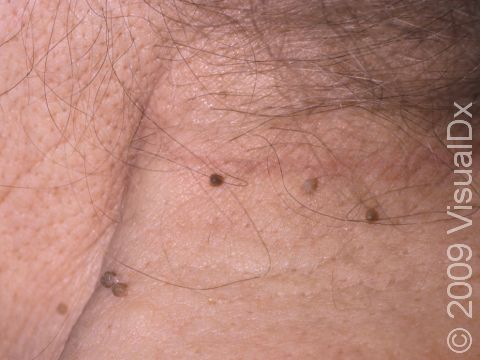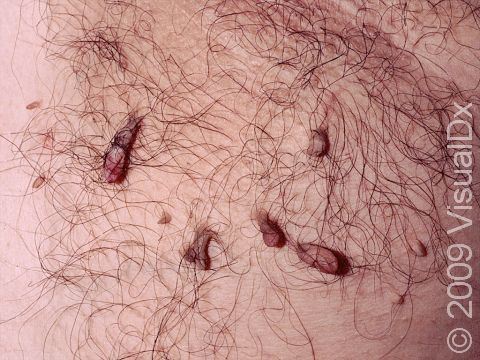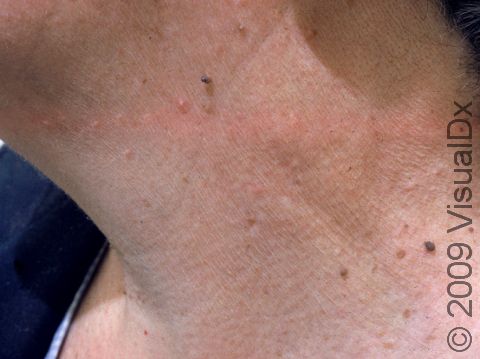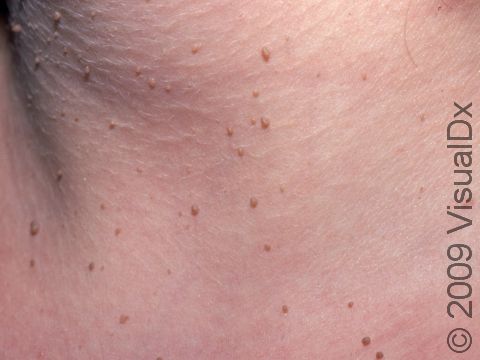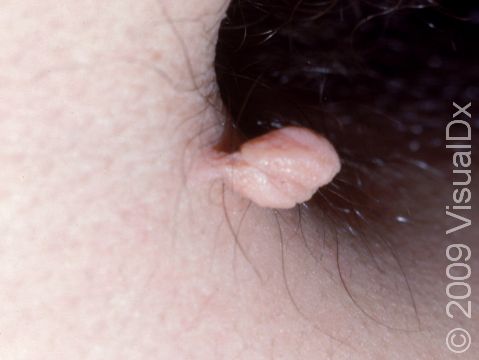Skin Tag (Acrochordon)
A skin tag (acrochordon) is a common, possibly inherited condition that manifests as small, flesh-colored growths on a thin stalk. Skin tags are benign lesions that can sometimes become irritated or traumatized.
Who's At Risk?
Skin tags are very common, and their incidence increases with age. Seen more often in people with growth hormone excess (acromegaly), skin tags are sometimes associated with acanthosis nigricans, a condition in which areas of skin may become thickened and velvety.
Signs & Symptoms
Skin tags are most commonly found on the eyelids, neck, armpits, and groin area. They are flesh-colored growths on a thin stalk, ranging in size from small to large.
Self-Care Guidelines
None necessary.
Treatments
Skin tags may be treated by:
- Snipping with scissors.
- Freezing with liquid nitrogen (cryosurgery).
- Destroying it with an instrument providing a small of amount of electrical current (electrodesiccation).
Visit Urgency
Skin tags are benign in nature, and, therefore, no treatment is necessary. However, you should seek evaluation from a primary care provider or dermatologist if you are either uncertain of the diagnosis or if the skin tags become irritated or painful.
Trusted Links
References
Bolognia, Jean L., ed. Dermatology, pp.1863-1864. New York: Mosby, 2003.
Freedberg, Irwin M., ed. Fitzpatrick’s Dermatology in General Medicine. 6th ed, pp. 767, 993-994, 1827. New York: McGraw-Hill, 2003.
Last modified on October 10th, 2022 at 7:25 pm

Not sure what to look for?
Try our new Rash and Skin Condition Finder
